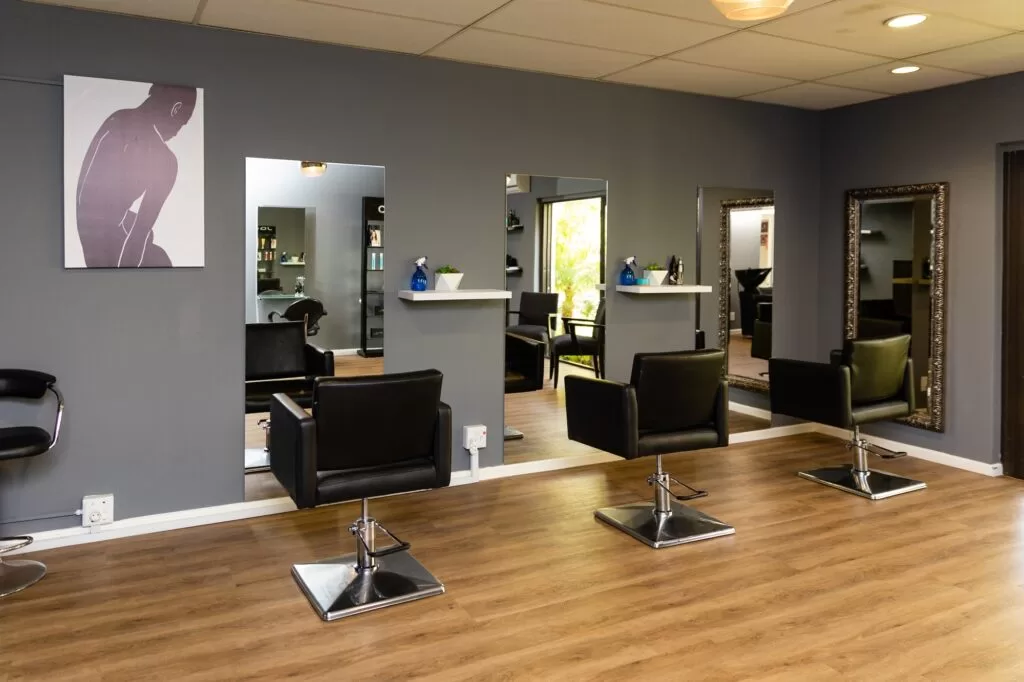Introduction
Haircutting is an essential skill for anyone interested in the world of hairstyling. Whether you are a professional hairstylist or just someone who wants to learn how to cut their own hair, understanding the proper techniques is crucial. Proper haircutting techniques can lead to better results, ensuring that the hair is cut evenly and styled to perfection. In this article, we will explore the importance of haircutting techniques for beginners and provide step-by-step guides on how to achieve different styles using various tools and techniques.
The Importance of Understanding Haircutting Tools and Equipment
Before diving into the different haircutting techniques, it is essential to understand the tools and equipment used in the process. There are various types of tools and equipment used in haircutting, including scissors, razors, clippers, thinning shears, combs, and brushes. Each tool serves a specific purpose and is designed to achieve different results.
Choosing the right tools for the job is crucial for achieving the desired haircut. For example, using the wrong type of scissors can result in uneven cuts or damage to the hair. It is essential to invest in high-quality tools that are specifically designed for haircutting. Additionally, understanding how to properly clean and maintain your tools is essential for their longevity and performance.
The Basics of Scissor Cutting: How to Achieve Different Styles
Scissor cutting is one of the most common and versatile techniques used in haircutting. There are different types of scissors used in haircutting, including straight scissors, thinning scissors, and texturizing scissors. Each type of scissor serves a specific purpose and is used to achieve different styles and effects.
To achieve different styles using scissors, it is important to understand the basic cutting techniques. The most common cutting techniques include point cutting, slide cutting, and blunt cutting. Point cutting is used to create soft edges and texture, while slide cutting is used to remove bulk and create movement. Blunt cutting is used to create clean, straight lines.
When using scissors, it is important to hold them correctly and use proper cutting techniques to ensure a clean and even cut. It is also important to consider the angle and direction of the cut to achieve the desired style.
The Art of Razor Cutting: Creating Texture and Movement in Hair
Razor cutting is a technique that is used to create texture and movement in the hair. It involves using a razor blade to cut the hair, resulting in a softer and more natural look. Razor cutting is particularly effective for thin or fine hair, as it helps to add volume and texture.
To achieve the desired texture and movement using a razor, it is important to hold the razor correctly and use the right technique. The razor should be held at a 45-degree angle and should be used in short, quick strokes. It is important to be cautious when using a razor, as it can be easy to remove too much hair or create uneven cuts.
Clipper Cutting: A Quick and Efficient Technique for Short Hair
Clipper cutting is a technique that is commonly used for short haircuts. It involves using clippers, which are electric tools with a set of blades that cut the hair to a specific length. Clipper cutting is quick and efficient, making it a popular choice for barbers and hairstylists.
To achieve different styles using clippers, it is important to choose the right guard size and use the correct technique. The guard size determines the length of the hair, with smaller guard sizes resulting in shorter haircuts. It is important to start with a longer guard size and gradually work your way down to achieve the desired length.
When using clippers, it is important to hold them correctly and use smooth, even strokes to ensure an even cut. It is also important to clean and oil the clippers regularly to maintain their performance.
Thinning Shears: How to Use Them for Volume and Texture
Thinning shears are a type of scissor that is used to remove bulk and add texture to the hair. They have teeth on one blade, which helps to thin out the hair without removing too much length. Thinning shears are particularly useful for thick or heavy hair, as they help to create volume and reduce weight.
To use thinning shears, it is important to hold them correctly and use the right technique. The thinning shears should be held at a slight angle and should be used in short, quick strokes. It is important to be cautious when using thinning shears, as it is easy to remove too much hair and create uneven cuts.
Understanding Layering Techniques: Adding Depth and Dimension to Haircuts
Layering is a technique that is used to add depth and dimension to haircuts. It involves cutting the hair at different lengths, creating layers that blend seamlessly together. Layering is particularly effective for adding movement and volume to the hair.
To achieve the desired layering effect, it is important to understand the different layering techniques. The most common layering techniques include long layers, short layers, and face-framing layers. Each technique is used to achieve a specific look and can be customized based on the individual’s hair type and desired style.
When layering the hair, it is important to use the correct cutting technique and hold the scissors at the right angle. It is also important to consider the length and thickness of the hair to achieve the desired layering effect.
Point Cutting: A Versatile Technique for Creating Soft Edges
Point cutting is a versatile technique that is used to create soft edges in haircuts. It involves using the tips of the scissors to cut into the hair, creating texture and movement. Point cutting is particularly effective for adding softness and blending different lengths together.
To achieve the desired soft edges using point cutting, it is important to hold the scissors correctly and use the right technique. The scissors should be held at a slight angle and should be used in short, quick strokes. It is important to be cautious when point cutting, as it is easy to remove too much hair and create uneven cuts.
How to Use a Comb and Brush for Precise Cutting and Styling
Using a comb and brush is essential for precise cutting and styling. They help to section the hair, control the direction of the cut, and create a smooth and polished finish. There are different types of combs and brushes available, each serving a specific purpose.
When using a comb, it is important to choose the right type for the job. Wide-tooth combs are used for detangling and sectioning the hair, while fine-tooth combs are used for precision cutting and styling. It is important to hold the comb correctly and use it to guide the scissors or clippers for an even cut.
When using a brush, it is important to choose the right type for the hair type and desired style. Round brushes are used for creating volume and curls, while paddle brushes are used for smoothing and straightening the hair. It is important to hold the brush correctly and use it to smooth and style the hair.
Tips for Choosing the Right Haircutting Technique and Tool for Your Hair Type
Choosing the right haircutting technique and tool for your hair type is crucial for achieving the best results. Different hair types require different techniques and tools to achieve the desired style. Here are some tips for choosing the right technique and tool based on your hair type:
– For thick or heavy hair, consider using thinning shears to remove bulk and add texture.
– For thin or fine hair, consider using razor cutting to create volume and movement.
– For short hair, consider using clippers for a quick and efficient cut.
– For long hair, consider using layering techniques to add depth and dimension.
– For curly or wavy hair, consider using point cutting to create soft edges and enhance the natural texture.
It is also important to consider your skill level and comfort with different techniques and tools. If you are a beginner, start with basic techniques and tools and gradually work your way up to more advanced techniques.
Conclusion
In conclusion, understanding proper haircutting techniques is essential for achieving the best results. Whether you are a beginner or a professional hairstylist, taking the time to learn and practice different techniques will help you improve your skills and create beautiful hairstyles. By understanding the different tools and equipment used in haircutting and choosing the right technique and tool for your hair type, you can achieve the desired style and create a polished and professional look. So, don’t be afraid to experiment and continue learning and practicing. With time and dedication, you can become a master of haircutting techniques.
If you’re looking for the latest trends in haircuts, Salon Sai has got you covered. Their blog is filled with informative articles on different types of haircuts and how to choose the perfect one for your face shape and style. One article that caught my attention is “The Ultimate Guide to Types of Haircut: From Pixie Cuts to Shaggy Layers.” This comprehensive guide breaks down the most popular haircut styles and provides tips on how to maintain them. Whether you’re considering a bold pixie cut or a trendy shaggy layer, this article will help you make an informed decision. Check it out here!










